Chapter I Introduction
1.1 Background and Objectives
1.2 Theories and Methodology of African Women's history.
1.3 The Setting.
1.3.1 The Igbo- General background:
1.4 Central Problems and Framework.
1.5 Sources and method of data collection
1.5.1 Oral sources.
1.5.2 Demographic Features.
1.5.3 Archival sources and court records.
1.5.4 Previous Research
--------------------------------------------------------------------------------
1.1 Background and Objectives
The study of women as a vital and autonomous social force, as well as the treatment of their weal and woes as an intrinsic part of overall social dynamics, is a child of very recent birth indeed (Afigbo 1989:7). M. I. Finley (1968:129) drew in the, 'The Silent Women of Rome', attention to the fact that 'The Roman World was not the only one in history in which women remained in the background in politics and business'. The women of mid-Victorian England were equally without rights, equally victims of double standards of sexual morality. Equally, they were exposed to risk and ruin when they stepped outside the home and the church. C. Obbo (1980:1) referred to the invisibility of African women in any serious study of history and society; in spite of the fact that anthropology has not been an exclusive male preserve.
If the state of African women's studies is as bad as these and other authorities suggest, it is not surprising that even now when the world appears to be waking to its responsibility in this regard, there are still segments of the field which continue to be in a state of some neglect. While topics such as marriage and family, the economic role and political rights of women have received a fair measure of attention, a subject like widowhood practices remains largely neglected. Many of such books have no entry whatever under the term 'widowhood' in their indexes. For the most part what passing references made to the institution are made under such subjects as 'burial' or 'funeral rites' and 'death'.
Although widows constitute a large proportion of the adult female population in many African communities, Betty Potash confirms that systematic investigation is missing (1986:1). The result is that much of the scanty information we have on widowhood practices is what may be described as raw or unprocessed information. Attempt has not been made to explain the practice in their sociological and cosmological context (Afigbo 1986:8). For the same reason of lack of analytical approach, comparative studies of widowhood practices appear to be conspicuous by their total absence. The great fact of the bewildering plurality of cultures in Africa suggests that we are entitled to expect a wide variety of widowhood practices not only as whether a local group is patrilineal, matrilineal, verilocal or exorilocal and so on. In Igboland[1] for example, which will be the focus of this study, we are bound to find significant differences between the different sub-cultures that are found within the ethnic group. These are likely to be the result of various influences ranging from historical contacts with their neighbours as well as western influence.
There are also absence of dynamic diachronic studies aimed at showing how widowhood practices have evolved or changed over time. This may be explained by the impact on indigenous African cultures of the two great world religions-Islam[2] and Christianity in addition to colonialism. We do not have yet any clear idea about the changes which these religions have brought to this institution. It is obvious however that in many cultures of Africa today what widowhood practices exist are amalgams of traditional usage, and usage traceable to Islam or Christianity or at times both (Afigbo op cit.: 8).
This brief reference to the state of research on widowhood practices has been made for the purpose of warning the reader of the danger of easy assumptions and generalisations on the basis of little or no evidence, or even on the basis of evidence drawn from a small locality. Variation would appear to be the hallmark of African cultures even when the culture in question has very limited geographical coverage. Taking the case of the Igbo, for instance, scholars have distinguished between at least six cultural sub-groups with marked differences in their ways of life.[3 ] And indeed, closer study will still reveal further differences within each sub-group.
To draw attention to the great fact of differences is not, however, to deny that there are perhaps similarities. Among such similarities are the asymmetry in the duties and privations expected of widows. It is a fact that widowhood throughout Africa is a period of hardship and deprivation. It includes varying degrees of physical seclusion, and a state of ritual contamination or impurity calling for purification. Another similarity that should be taken into account is the fact that African peoples carried substantial elements of their cultural practice, including widowhood practices, into the two new world religions which they embraced. The result is that widowhood practices in Africa today are a bewildering and confusing mix of traditional African practices and practices borrowed from Islam and Christianity.
Present day Igbo society is what may be regarded as a 'transitional society'; a society characterised by a discontinuity of cultural perceptions arising out of the juxtaposition of mentalities formed by external influences and variables. Some of the most pervasive influences on the Igbo people and their society have come from outside Igboland. These include the slave trade, colonisation, amalgamation of present northern and southern Nigeria in 1914 by the British administration. Others include external economic and social relations (trade, missionaries, education), the First and Second World Wars, independence and the Nigeria-Biafra Civil War from 1967-70. Contemporary Igbo society is undoubtedly a transitional society in the above sense. Although the Igbo have been regarded as very receptive to change, certain customary practices have survived this transition. Widowhood as shall be shown here is among them. It should therefore be noted that many cultural beliefs and practices surrounding widowhood ceremonies have seemingly survived largely unchanged in modern Igbo society. As we go into this thesis, I must mention that although this topic is concerned with Igbo tradition, it is necessary to bear in mind the macro-context within which these traditions have had to operate.
To do this work therefore, it will be necessary to examine some of the theoretical and methodological constraints associated with the study of women's history and women's studies in Africa.
1.2 Theories and Methodology of African Women's history.
When it comes to studying the history of women in most parts of Africa, many road blocks prevent the historian from producing a coherent narrative. The lack both of evidence and the appropriate questions posed by scholars hamper such effort (White 1988:58). Many of the travellers' accounts that described trade, state formation, and warfare in detail give biased account of women. A survey of Arabic texts reveals reports on West African women that tell little or nothing about their lives. Where they are available, the reports are held up against standards that make them appear to be uncivilised. These accounts in particular seem most concerned with whether or not women were appropriately dressed. Such accounts share much with the biased and sexist account of Europeans in later centuries. Deeply rooted western attitudes complicate the approach to third world women's history. The nineteenth century equation of the west with progress and modernity, the rest with stagnation and tradition still colours much of the discussion of women in third World Studies.
The history of women in Igboland in particular and Nigeria as a whole has not been adequately studied. In the past, such neglect reflected the general state of African historiography. Focus on visible political institutions, diplomatic events, and intellectual current of the high, as opposed to the popular, culture long confined the field of inquiry to upper class males at the expense of studying the roles those of another class or gender played in the historical process (Tucker 1985:1). But even now as a new generation of historians in Africa and the West direct their attention to the social and economic history of the region and begin studying the history and culture of social classes such as peasants, urban craftsmen, causal labourers whose history and culture remained obscure and irrelevant to the African historian, women have not received adequate attention.
Part of the problem surely springs from basic misconceptions about women's history and its relation to social and economic history as a whole. Women have always been numerically important in human population, a sufficiently compelling reason perhaps to explore their past. But full significance of the study of women lies elsewhere. The history of women demands an immediate awareness of a multitude of forces, institutions and activities which elude analysis at the level of official political overview; rather the world of informal networks, popular culture and the basic forces of production and reproduction define the arena of women's activities and therefore women's studies (Tucker 1985:1)
B. Awe (1991:211) has noted that while building up their own picture of African society, as distinct from Western nations' picture of that society, African historians seemed to have inherited a certain degree of western bias, in that they have perpetuated in their writings the masculine-centred view of history. Explaining human experience in Africa, they have accepted the male experience as the norm while African women in consequence become anomalies. Thus Awe argues that the eight volume General History of Africa published by UNESCO in 1981, which summarised current significant knowledge in African history says nothing about female contribution to that history. Following the same pattern Awe maintains, The Groundwork of Nigerian History, the standard text on the history of Nigeria made no particular mention of the role of Nigerian Women in the development of their different societies.
The presentation of African Women in historical writing according to I. Imam (1988:30), has been characterised by four approaches. In the first (and most obvious) case women have simply not been presented at all: In the second, they have been seen as inferior and subordinate to men. The third trend has been a conception of women's roles as equal and complementary to those of men. Finally there has been a movement towards seeing women as active agents in the historical processes.
That the presentation of African women through history can take so many forms demonstrates what by now should be a truism: that facts are not neutral and immutable natural objects but part of theoretical and conceptual constructs (Imam 1985:30). G. T. Emeagwali (1980:95-110) points out that, historical reconstruction is influenced not only by primary sources but also by the researcher's speculative philosophy of history which is itself affected by his or her own value system and the intellectual and socio-economic environment. A world view that relegates women to the background has obvious implications for the treatment of the role of women in historical reconstruction. Women will be accorded scant and superficial attention and thereby rendered absent from history.
The non appearance of women can be most clearly highlighted by considering studies on issues in which women might be expected to play a role. Adam Kuper's study of bride wealth in Southern Africa in his book Wives for Cattle, (1982), for instance, implicitly discusses the role played by women in maintaining the corporate structure of various societies, but women as a group received only superficial attention. As Margaret Strobel (1983:38) points out in her review of Kuper's book; Kuper only occasionally reflects upon the extent to which women exercised power or not in the context of bride wealth. How women fared as recipients, negotiators or objects of bride wealth is of little concern[4].
Similarly although Esther Boserup (1980) has pointed out in her book Women's Roles in Economic Development that Africa is the region of women's farming per excellence, Agboola's study of Agricultural Changes in Western Nigeria 1850-1910, totally ignores the changes in the gender-based division of labour that resulted from establishment of cocoa as a cash crop. E. Njaka's study of the transition of Igbo political institutions during the colonial experience in discussing Igbo political institutions, mentions women's organisation on fewer than 20 pages of a 669-page thesis. While Kaneme Okonjo (1976:45) in "The Dual Sex Political System in Operation : Igbo Women and community Politics" in Women in Africa refers to a dual-sex system in Igboland and Judith van Allen (1972:165-81) refers to a more or less stable balance of male and female power, Njaka (1975) sees women's organisation merely as one of four minor counter balancing agents. His attitude towards women can be seen from the following words: "Despite this power, however, the Umuada (patrilineal daughters) are said to be like mothers-always lenient and not as fierce as it sounds (Njaka 1975:260).
The second theme in the presentation of African women through history typifies them as oppressed and totally subordinate to men. The main works of this type are not historical texts as such but ethnographic and anthropological monographs such as the work of the Ottenbergs and that of Evans Pritchard. These studies assert that the African woman has a position and status that is in many ways definitely inferior to that of man in spite of the fact that she does most of the hard work of supporting the family. They maintain also that the greater number of indigenous societies (in Africa) reserve for women a place which is clearly inferior, approaching that of a domestic animal. They focused on such issues as childhood betrothal, polygamy, or the lack of divorce rights (Imam 1988:33).
These views are influenced, as several commentators have pointed out, by the two prejudices: male bias and western ethnocentricity. The influence of male bias may come both at the point of the primary sources and at the point of the researchers themselves (usually himself). Evan Pritchard's Man and Woman Among the Azanda for example, might more accurately have been entitled How Azanda Men View Women, for, Imam contends, it consists of Azanda men's comments on women collected by other African men and compiled by a European man. No where in the book do women present their own view point. The point according to this author is that very often data on women and their roles are merely male informants' views, and this -male version of reality is accepted as the group's reality.
The issue of ethnocentricity in anthropology has been the subject of criticism also among anthropologists themselves. However, it is sufficient here to point out that many researchers came to their subject matter with pre-conceived assumptions about the superiority of European culture and were only too ready to dismiss customs that were different from their own as barbarous and degrading. Iris Anddreski's introduction to Old Wives Tales: The life Stories of African Women (1970) for example shows a totally negative attitude to and lack of understanding of Ibibio society and culture.
In direct opposition to the above presentation of African women's inferiority is the theme of women's complimentary role to men, equal but different so to speak. According to this framework, while African men were dominant in some spheres of social life, African women were equally responsible for other areas of influence. That is male and female roles were complimentary and issues of super or subordination did not arise. Practices such as levirate, polygamy, female seclusion or clitoridectomy are therefore simply cultural practices which have been misunderstood by ethnocentric westerners (Imam 1988:34). This is also evident in studies of the political roles of women in Africa. Annie Lebeuf (1971:63) states:
In general, the profound philosophical ideas which underline the assignment of separate tasks to men and women stress the complimentary rather than the separate nature of the task. Neither the division of labour nor the nature of the task accomplished implies any superiority of one over the other, and there is almost always compensation in some other direction for the actual inequalities which arise from such a division.
Evidence from societies such as the Igbo shows that not all women were without defence against any harsh treatment of women. Igbo women developed effective women's self-help and mutual protective associations during the pre-colonial era which could carry out public ridicule and even group punishment of men who seriously mistreated women. (cf. membership in lineage, age set, society wide puberty rites, secret societies, women's interest groups, dance groups etc.). In fact, Nina Mbah in her book Nigerian Women Mobilised: Women's Political Activities in Southern Nigeria 1900-1965, (1982) argues that in pre-colonial Southern Nigeria, the women's world is not subordinate to that of the men but rather complimentary.
This approach to African women's role is part of what Imam has described as the concept of "the Golden Age of Merry Africa" in which pre-colonial Africa is seen as a land of peace and harmony, free from conflict- something like the garden of Eden before the serpent. It owes its genesis to a number of factors. On the part of African researchers, the impetus is very much that of the anti colonial feeling generated in nationalistic struggle and the resurgence of interest and pride in African indigenous institutions that came with the philosophy of negritude, especially felt in the writings of such Francophone authors as Houteto. For American and European researchers, the influence of the Black civil rights movements led to interests in Africa's past glories, while the women's movements heightened interest in women's activities. However, as Hafkin and Bay (1976:4) put it:
In this period some of the literature that emerged was romantic or historically inaccurate. In a search for greater glories to counteract a past that had ignored and distorted the history of women and of Africa, writers described great queens, Amazon and matriarchy. These writers see the present subordination of women as caused by colonial policies, in particular the bourgeois male chauvinist assumptions of European colonial administrators, which were reflected in colonial legal structure, formal western education and Christianity.
The fourth and most recently developed trend in the presentation of African Women's history explicitly sees women as actors in the social process rather than passive recipients of change. Here, however, there is a recognition of the social structure and mechanisms that constrain women and place them in subordinate positions, but the approach focuses on the way in which women have been active in attempting to establish their authority and independence nonetheless.
Within this approach two currents can be identified (Imam 1988:36). The first trend is to concentrate on the activities of women as leaders (of women's organisation in particular). These writers share with some of these writers of the "Merry Africa" tradition, a conception of historical processes in terms of the leading personalities of social groups (and usually of the dominant social grouping). Personalities such as Queen Amina of Zauzzau[5] or Madam Yoko of the Kpa Mende are prominent, but the analysis tends to be silent in terms of the generality of women. Similarly, Nigerian Women in Historical Perspective edited by Bolanle Awe adopted this approach by discussing individual women except for Nina Mba's "Heroines of the Women's War" which attempted to discuss women's role in the war of 1929 from a general perspective.
Agnes Akosua Aido looking at Asante Queen mothers in government and politics in the nineteenth century concludes that these women had great personal strength and ability, that they were most effective where they were free from ritual constraints and there were no effective male leadership. She also states that Asante Queen Mothers derived their power and support not from "female power" but from all effective sections of Asante society. Okonjo (1976:45), on the other hand, considers what she terms "the dual-sex political system" in Igboland, where women had political spheres of authority that were parallel to those of the men, although "as elsewhere men rule and dominate". As with those who present pre-colonial African woman as being complimentary rather than subordinate to men, writers in this current attribute the decline in women's status to the patriarchal Victorian ideology of colonial administrators. Okonjo concludes that the absence of women from significant political representation in independent Nigeria can be viewed as showing the strength of the legacy of single-sex politics that the British colonial masters left behind.
The second current within this approach of seeing women as active agents does not focus on individual women but on women as a group and the socio-economic ideological conditions within which they have acted. For example R. Roberts (1984:229) argues that patterns of household relations (including gender relations) are directly influenced by changes in the larger political economy which the household embedded. He concludes that it was the combination of the increased influence of Islamic ideological practices and of the market forces that heightened the tendency of Maraka households to be patriarchal.
Once again the position of African woman is seen as having deteriorated through the colonial experience, but here it is attributed not simply to the ideological positions resulting from the imposition of capitalist underdevelopment. Judith van Allen's analysis of Igbo Women's political institutions, however considers only political and administrative reforms based on Victorian male ideology (Imam 1988:37).
In my study, I shall adopt the fourth approach. I justify this because we will need to understand if women enjoy a higher status in Igbo society. Are there noticeable changes in customary and ritual positions at any stage of the Igbo woman's life? At what time is the woman independent and what circumstances permit exploitation within and outside the family. These are some of the questions that will inform the approach adopted in this study.
1.3 The Setting.
The field work was carried out at Mbaise. Mbaise is a colonial creation (see figure I & map 3). It means five clans which were brought together by the British Colonial administration for administrative purposes under the Owerri division. Although Owerri had become important in the twentieth century by reason of its being an administrative and judicial nerve centre of the British administration, there is no evidence of its having any dominant position vis-a-vis its other neighbours prior to the establishment of British colonial rule (Ekechi 1989:8). Before 1902 when the Aro expedition was carried out by the British to stop or subdue the Aro slave trading oligarchy, Mbaise as presently constituted and indeed Owerri had not come into British scheme of things. By 1935 some twenty-five to thirty different towns were brought into the vortex of Owerri political and judicial authority.
The history of the establishment of British authority in Mbaise, Owerri division as in other parts of Nigeria is basically the story of conquests and fusion. Indeed beyond the immediate environs and the village boundaries, government authority was virtually non-existent. But by 1905 however, the Ahiara Expedition[6] had brought the full impact of British colonial control on the present Mbaise people. At the conclusion of the operation in April 1906, the present-day Mbaise consisting of three local government areas (Aboh, Ahiazu and Ezinihitte) was effectively brought under Owerri jurisdictional authority.
In order to keep the whole clan under strict surveillance, a native court was established at Obohia in 1907. Because of political problems and pressure from Chief Nwaturuocha of Nguru, the court was transferred from Obohia to Nguru in 1909. In 1929 the Nguru court at Mbaise was destroyed as a result of the Women's revolt of that year[7]. Thereafter, sessional courts were opened at Obohia, Itu, Ife, and Enyiogugu in response to the "home rule" movement of the 1930s[8].
Fig. 1 Owerri Local Government Organisation, 1945
__________________________________________________________________________________________________
Group councils/group courts Number of villages Federal councils/clans
__________________________________________________________________________________________________
Ezinihitte 16 Mbaise
Agbaja 7
Oke-Ovoro 4
Ekwerazu 6
Ahiara 11
Oru 7 Oguta
Izombe 6
Owerri 5 Oratta
Uratta 10
Ara-Umunwoha 9
Agbala 11
Nekede-Ihiagwa 6
Obudi 1
Ohoba 6 Ohoba
Awarra 4
Umuapu 11
Isu Mbieri 9 Mbieri Ikeduru (Note:
Ikeduru 15 Approval was sought
to change the federal
name to Ogu Mbano)
Etche 6 Ngor-Opkala
Okwe 6
Umuaro-Imerienwe 7
Obike 5
__________________
Total 168
_______________________
Source;Ekechi 1989:179
Today Mbaise is made up of three local government areas: Ahiazu which was a merger between Ahiara and Ekwerazu, Aboh Mbaise a merger between Oke-Ovuru and Agbaja and Ezinihitte local governments. They have a total estimated population of 800,000 people[9] (see maps 2&3).
1.3.1 The Igbo- General background:
The Igbo speaking people constitute one of the largest ethnic groups in Nigeria. Located in South-eastern Nigeria between latitude 5 and 7 degrees north and latitude 6 and 8 degrees east, they occupy a continuous stretch of territory of about 25,280 square kilometres. They are roughly bounded in the east by the Ibibio people, in the north by the Igalla, Idoma and Ogoja people, in the south by the Ijo and in the west by the Edo. (see map 2). Today, the Igbo inhabit the entire Imo, Abia, Anambra and Enugu states in present day Nigeria while a significant number of them are included in the Rivers and Delta states. Population densities in the Igbo heartland are very high ranging in average from 750 to 1000 to the square kilometre. The Igbo number over 20 million in present day Nigeria.[10]
It is the Igbo who occupy the northern half of the area which stretches into Ibibio and Ijo territory to the south who are the focus of this study. (see map 4). They form the main cultural area of the Igbo of which Mbaise is a part. The growth of vegetation is rapid in this belt, and palm forest has taken the place of the original rain forest. This indicates that this area had long been populated by people whose main livelihood was farming. This area is the most densely populated part of West Africa. A population of more than 1000 per square mile[11] has been recorded in Northern Ngwa, Owerri and Orlu. The Etche and Ikwere and Western Aba areas are less densely populated with 300-400 persons per square kilometre.
In the eighteenth century population movement to the south was accelerated by the slave trade and palm-oil trade with the Europeans and coastal peoples. This is the habitat occupied by peoples whom Forde and Jones called the Southern Igbo. The distinct cultural features that distinguished the Southern Igbo from the others are the marked absence of elaborate title systems and mmuo societies. However, secret societies occur among Ngwa and masked dances occur in the western border of this sub-culture area. The ritual slave system called osu is strongly developed among this Igbo group and the mbari temples associated with the cult of the earth called ala occur in the southern part (Onwuejeogwu 1987:21).
There is evidence of Nri[12] influence in this area, more especially on the northern part. The duru title and Nri type rituals connected with earth, ancestors and yam cults Ahiajoku occur. The duru title is a southern Igbo version of the ozo title, and it is said to have been conferred in the past by Nri men who were referred to as the Umudioka (children of Dioka) in some parts of this area. Christian religion, especially Catholicism, has in recent times greatly re-ordered traditional institutions, especially the ritual and customs. This is the area that has nurtured the Owerri and Ngwa civilisation of which Mbaise is part.
To fully appreciate the Igbo way of life in relation to women in general and widows in particular, it will be necessary to outline briefly some of the features of the socio-political and economic system of the Igbo. The village is the basic political unit. Political authority was diffused among the heads of the lineage and was exercised in a democratic and informal way. There was sex differentiation in political roles but no female could be the head of a household or lineage or a sub-lineage (Mba 1992:75). Women had their own roles which sometimes acted as a check on the activities of men.
In the past people's lives was directly linked with the prevailing production and distribution schemes. No elaborate, codified social welfare policies, schemes and programmes executed according to a carefully systematised community development blue-print existed. Yet as Ifemesia (1981) has elaborated, every single routine activity of individuals and groups generally carried a social welfare overtone both for the individual, his kin-group and his community. Accordingly, social institutions of family, kinship and marriage and those of education per se, polity and religion, all provided social services and amenities as their customary reason for existence.
The economic system of the Igbo can be studied under three major heads: Agriculture, trade, and local manufactures. Agriculture was the most important single occupation of the Igbo in pre-colonial times. Both the Igboman and woman were farmers (Eluwa 1988:65). They produced enough yams and coco yam, cassava and vegetables to meet the basic needs of the family. The surplus was sold to enable the family to buy other items which it could not produce.
Trade and barter were important aspect of Igbo economic life. Ecological differences and varied vegetation was the major reason behind the development of local and regional trade amongst the Igbo. Apart from internal trade which seem to have linked Igboland into a kind of 'economic common wealth', external trade between the Igbo and her neighbours developed. These neighbours included the Benin, Igalla, Idoma, Ibibio and the Ijo of the South.
1.4 Central Problems and Framework.
This study will analyse widowhood practices in a contemporary Igbo society. The importance of cultural traditions will be highlighted in an attempt to understand such practices and rituals. The following are central in this study:
An examination of the rituals and practices which a woman undergoes on the death of the husband.
An examination of Igbo marriage patterns, domestic and affinial relationships, its impact on widowhood practices and the widow's life.
An examination of widows economic survival strategies. The economic system of the Igbo will be examined to highlight the impact it has on widows economic survival.
This work is divided into five chapters. The present chapter, Introduction and background, in which the theoretical and methodological aspects of the work are discussed. This is done in relation to the Igbo and Africa woman in general. Chapter Two deals with present day widow practices and the sociology of such practices in an Igbo community seen in historical perspective. Chapter Three discusses Igbo widows in domestic and affinal relationships with a special view to understanding how marriage systems may impact on widowhood practices. Chapter Four relates widowhood to the economy. Widow's economic survival strategies as well as the economic options available to them today are examined. The thesis is concluded in Chapter Five.
1.5 Sources and method of data collection
Three main types of evidence have been used- oral evidence, court reports and secondary sources:
1.5.1 Oral sources.
Oral sources are central to the study of history in the third world till the present day. Not only are written sources limited in certain areas of inquiry, archaeological and other sources through which the historian can decipher African history has not been fully collated and collected. In a topic such as widowhood there is little information available to the historian. Since the 1950s, when oral sources became an important aspect of the academic historiography of Africa, the study of oral tradition has gone through a considerable process of change, reorientation and maturation. Past problems have been associated with interpretation of information emanating from Africa as presented by Africanists and Africans.
I consider oral history method as central in this particular study concentrating on a limited area within the Southern Igbo sub-cultural group to decipher attitude to widows as well as the options open to them. The research on which this thesis is based was undertaken in Mbaise, an Igbo community within the Southern Igbo cultural sub-group between January and June 1995. I used interview as the main research method. For the formal interview, I created a 20 item questionnaire (see appendix B). Each interview took about 2-3 hours. The questionnaire was partly used as such, partly as an inspiration for free discussion. In addition to using participant observation, I collected life histories of 80 widows and interviewed 5 men to get their view of widow practices. General insight into widowhood practices, marriage, inheritance, maternal/filial ties came from these informants. My wife and mother assisted by obtaining consent from some of the widows before the actual interview took place. Two other assistants were used to conduct household census from four villages in Mbaise. Part of the statistics used here came from this census. Ages when unknown were estimated through discussion with the informant.
Privacy and the need to avoid shame is prevalent among the Igbo and was evident during field work. I experienced that some of the widows were not very willing to talk about certain aspects of their personal lives. These were especially in areas concerning relationships with the extended family and other men since the period of their widowhood. The fact that I am a man made it problematic to discuss sexual relationships. The society frowns at individuals who discuss such things let alone with some of the widows who are old enough to be the researchers grand mother. The researcher's wife and mother were of great assistance in this respect. Some were not willing to discuss the issues of inheritance for fear of repression from their kin. Some were afraid that the above information may be passed on to other people in and outside the village. Married women also do not talk too freely about widowhood for the fear of becoming widows. Widows are anxious not to give an image of themselves that could upset their kin or expose self-pity. The apparent pride of the Igbo person even at the point of desperation makes the widow hide behind a mask and wear a smiling face.
Widowhood experiences are traumatic and are easy to remember, but the widow may be distorted in memory in order to avoid reliving the trauma. Some widows were not willing to talk about their experiences at all. One of the widows put this as follows, "this is something I do not want to relive again. I do not want to talk about it". A lot of the widows see widowhood as a period of subjugation, deprivation and humiliation. Consequently, they tend to present their experiences from this point of view. The oral sources, however, provide information on the real life experiences of widows and have been used in various parts of the text as examples of what widows experienced and still experience.
A general problem associated with research in some developing countries is lack of adequate statistics. Census figures are unreliable[13]. There are no data bases from which one can get specific information about a particular group. For instance, births and deaths are not registered. In this situation, statistics may not only be unreliable but difficult to get at times. I have had to make my own statistics to give the demographic feature of my study area.
1.5.2 Demographic Features.
There is a high rate of widowhood among the Igbo. I collected census data of four villages in Mbaise community. There were 600 adult women living in these villages in 1995. Of these 169 (24%) were widows (see Table 1). There are two main reasons for this high rate of widowhood: It is for one, accounted for by large age differences between husbands and wives especially in traditional society. In polygamous[14] families, the age disparity for second and subsequent wives is even greater. In western societies, widowhood may largely be associated with ageing. This is not the case with Igbo society.
Table 1
Female population of four Mbaise Villages by Age and Marital Status
Marital status
_______________________________________________________________________________________________
Age Group Single Married Separated Widow Total %
16-30 109 132 2 15 258 43
31-45 18 129 - 29 176 29
46-60 - 51 - 44 95 16
60+ - 16 - 55 71 12
__________________________________________________________________________________________________
Total 127 328 2 169 600
Percentage 21 55 0.3 23.7 100
__________________________________________________________________________________________________
The second reason for high incidence of widowhood can be traced to the Nigeria-Biafra civil war between 1967 and 1970[15]. Although adequate statistics are not available, there are suggestions that over 1 million Igbos lost their lives as a result of the war and the ethnic cleansing which precipitated the war itself. The war created a large widow population.
Yet another reason may be the low incidence of widow remarriage. Of all the widows interviewed in this study, only two remarried after the initial mourning period. The statistics show that remarriage was not a popular option for Igbo widows. The economic and social reasons for this are discussed in chapter three.
30% of the widows were under 40 years of age at the time of their husbands death; 65% were under 50 (see table 2). The significance of these figures depends of course on life expectancy within the area. I have no specific data on the Igbo generally and the Mbaise area in particular, but life expectancy at birth for all of Africa was 45.9 for the year 1970 to 1973[16]. Therefore, about 30% might expect to live at least another 10 years. My study does not show a significant difference from the above. Only 14 out of the 80 informants are above 60 years. This includes 4 informants whose ages were estimated.
Table 2
Age at which women become widows
____________________________________________________________________
Age Number %
Under 20 1 1.25
20-29 9 11.25
30-39 14 17.50
40-49 28 35.00
50-59 14 17.50
Over 60/estimated 14 17.50
___________________________________________________________________
Total 80 100
___________________________________________________________________
In polygamous marriages, most second and subsequent wives are much younger than their husbands. 5 of my informants were from polygamous families. 2 were first wives, 2 and 1 were second and third wives respectively. The mean average differences between husband and first, second, and third wife are usually high. Polygamous marriages is on the decline, and this can be attributed to Christianity, changing economic activities caused by scanty resources. Instances exist also of younger women who marry older men who probably have lost their first wives. In such marriages, the determining factors for the husband may be the need for assistance in raising young children left by the former wife.
Barrenness in a marriage is also another factor which determine if a man may marry another wife. This factor as well as the absence of a male child is usually used to rationalise the need for a second wife. Most women usually will support such propositions. The second or third wife in this arrangement is usually younger and therefore stands the chance of becoming a widow at a relatively early age. No matter the reason used to rationalise this, it has its impact on the demographic pattern of the widow population in Igbo society.
In contrast to the above demographic pattern, there are marriages where the age disparity between the husband and the wife is small. In these cases, there are likely going to be a lower percentage of widows and the widows will typically be older. This is closely related to the fact that less men marry more than one wife and this is the emerging trend in the contemporary Igbo society. Men are almost as likely as women to experience the loss of a spouse.
Age disparity between spouses is not the only factor involved in demographic variations. Divorce and remarriage are also important. Enid Schildkrout(1989) uses this to shows how widowhood clusters at two different periods of the life cycle, depending on prior marital history. Hausa, women for example who remain married to their first husbands will be widowed at a relatively young age. Those who divorce and remarry may not be widowed until late in life since second husbands tend to be closer in age to their wives. The time of life at which a woman becomes widowed affects her subsequent marital behaviour. For older women widowhood may be a permanent status[17]. However, the Igbo is not a high divorce society and widowhood reflects these changes although statistical data that would allow comparison of past and present are not available. These transformations are complex and their implications are not the object of this study.
More complex is the impact of various structural changes on the status of widows. Incidents of widow remarriage today are very isolated and so is levaritic relationships. My study showed only two incident of remarriage, two cases of levirate relationships and five had lovers. Widows are therefore likely to retain this status. Today, levirate relationships are also minimal. Oral information confirms that they were very frequent in the past.
A host of structural changes may have resulted in this transformation: shortage of men in suitable age group, largely because of the civil war, new marriage and inheritance laws, the impact of Christian religion, the influence of western education, new modes of economic support, land shortages, the availability of hired labour, and new bases for prestige and status. But the manner in which widows and others respond to new possibilities and/or adapt to new constraints is complex and variable. There are no automatic concomitants of such structural changes and no uniform trends that cut across society. However, the above presentation is a general demographic pattern of widows in contemporary Mbaise society.
1.5.3 Archival sources and court records.
The second source of information was derived from reports of civil cases at the customary and civil courts concerning widows. These type of cases are usually handled by one of the following: (i) Village councils (Aladinma), (ii) the Eze-in-council (the traditional ruler of the autonomous community), (iii) the customary courts. I found that records are not properly kept in the case of the first two (although they handled most of such cases). The native court system which has been replaced today by the customary courts handled both criminal and civil cases during the colonial era.
Ekechi's Tradition and Transformation of Eastern Nigeria 1902 - 1947, (1989) with reference to Owerri and its hinterland, is an analysis of the establishment of British rule. He shows how this gave rise to the creation of native courts and the appointment of warrants chiefs; two novel institutions which radically affected the traditional systems of law and authority. As a matter of fact, their impact is still being felt. Until well after the Second World War, the native courts and warrant chief system dominated the political history of Owerri and its environs. Ekechi argues that their introduction altered the pattern of indigenous administration and created political and social restlessness. In his annual report for 1938 the DO (District Officer) at Owerri lamented the preoccupation of administrative officials with native courts and their problems[18]. In exercising the powers granted to them, the native courts tried both civil and criminal cases and imposed fines ranging from a few shillings to a maximum of Fifty Pounds. These included matrimonial and land cases.
In Mbaise, there were five of such courts before independence in 1960[19]. Today they have been replaced by customary courts charged with judicial functions in matters concerning the customs and traditions of the people. Most land, marriage and other matters in relation to customs and tradition end up in these courts.
A number of court cases relating to widows do exist at these customary courts. There was difficulty in identifying such cases because the courts do not have a data base or index from which you can distinguish which case related to a widow. Only two of such cases which took place between 1988 and 1989 were available to the present researcher. They, however, provide a general insight into the influence of customs and traditions in the determination of the rights of the widow in Igbo society. Some reports were also consulted at the palace of the traditional ruler of Ihitteafoukwu- Mbaise. A case concerning a widow's right to sell land took place in 1987. This was a useful case, as it related itself to the customary rights of a widow to own or sell land, a major economic factor in a predominantly agrarian society.
Little information of cases concerning widows was available from the village council records. There are no records of proceedings and judgements in most of these cases. They are still conducted in the traditional system. That is in open courts and agreement reached by consensus. The researcher was, however, able to follow one of such cases during field work. The researcher kept his own records of the proceedings over several days. In this case, the verdict was appealed to the customary court and not yet decided at the time of concluding field work. Information from this case has been cited in parts of this work.
1.5.4 Previous Research
A number of anthropological studies and other literature has been written about the Igbo in general and the Igbo of South-eastern Nigeria in particular. Widowhood literature however is little. Mention of aspects of the practice however can be found in a few texts[20].
Although marriage is a universal or nearly universal experience for most women in African societies, African women are not necessarily involved in marital relationships throughout their adult lives. In some West African societies, for example when women approach menopause, they leave their husbands and return to their natal kin[21]. This practice has been described by Meryer Fortes (1949b) and Esther Goody (1973) as 'terminal separation', E. E. Evans-Pritchard, in his study of the Nuer of the Sudan (1951) discusses unmarried women and widows in concubine relationships. A number of studies describe divorced women who live alone for example, that of Abner Cohen of the Hausa of Ibadan, Nigeria, (1969). Kirwen in African Widows (1979) examined only 'Leviratic Marriage' or wife inheritance in four Tanzanian communities and the problems which that practice poses for converts and the Roman Catholic Church. Leviratic marriage is only the tip of the iceberg of widowhood practices in Africa. The author therefore falls into the same category of the norm centred bias of older literature on widowhood. A further look at Kirwen's bibliography emphasises the point made here about the lack of targeted research on the institution. In nine pages of bibliography, there is not one title, book or article which focus directly on widowhood.
But since 1979, the situation has improved; Potash's (ed.)(1989) Widows in African Societies: Choices and Constraints: is an attempt at a systematic approach to the study of widows lives in Africa focusing on widows themselves, their interests, the strategies they employ to realise such interest, the force that determine such strategies and the quality of their lives. Although the book is supposed to be a comprehensive data on African widows, its accomplishments are far from achieving this goal. The ten societies sampled in the book display diversity without being formally representative of even sub-Sahara Africa. These close-ups range from the matrilineal Akan and cognatic Baule of West Africa to the patrilineal Luo, in the East; from Urban Hausa and Swahili to Rukuba subsistence cultivators on the Jos Plateau of Nigeria. These were anthropological studies conducted between 1975 to 1982 but still provide useful information on the subject.
S. Omiyi found in her article `Women and Children under Nigerian Law' that the legal status of the widow depends on the type of marriage she contracts. This examines the position of the widow under customary law marriage, Islamic law marriage and statutory marriage. This applies to the Igbo as well. It is a useful piece of work on a widow's property rights under the law in Nigeria both in the traditional and contemporary society. She concludes that the position of the widow under customary law has not changed a lot yet.
In 1989, I attended a workshop on widowhood practices in Imo State. The workshop provided me the first opportunity to appreciate the subject. The monograph Widowhood Practices in Imo State, is a collection of papers which appeared after the workshop. It is probably the only material which is currently available on the subject among the Igbo from this region. Among the papers presented were A. E. Afigbo's 'Overview of Widowhood Practices in Africa'; I. D. Nwoga's examination of 'Widowhood Practices' in Imo State Nigeria. Although Imo State is small in space, it contains several cultural and ecological zones and this fact is reflected in some cultural differences in widowhood practices. It is not, for example, to be expected that matrilineal societies like Ohafia would have the same practices a patrilineal community like Mbaise. Another article was Nzewi's `Widowhood Practices: A Female Perspective'. Her paper compares various Igbo communities in Imo State and included her own experience as a widow. Eze and Nwebo presented a paper- 'Widowhood Practices; Law and Customs' in which they argue that the Nigerian legal system recognises a dual system of marriage both of which are mutually exclusive. These are "statutory marriage" and "marriage under customary law". The Nigerian family law permits certain widowhood practices which are discriminatory and oppressive to the women vis-a-vis their male counterpart. On the other hand the customarily married woman is even more disadvantaged and oppressed when compared to her statutory married counterpart they noted. It is their view that the fate of the widow is a direct consequence of the nature of marriage she contracts and the rights that accrue to her thereof. These papers generally concentrated on the negative aspects of widowhood practices among the Igbos in Imo State. I observed that the workshop was mainly aimed at highlighting what the organisers regard as discrimination against women. The papers presented however informed my initial interest in this area of inquiry. These papers provide a basis for discussing the topic in historical perspective.
My study however is that of a local community of which I am a member. It is also a study in which I know personally many of the informants and in which I have witnessed some of their experiences. As distinct from any previous study, my research is therefore based on a different approach. It is based on an intimate knowledge of widows experiences some of whom I interviewed twice during field work in 1995 and 1996. Concentrating on a small area, I was able to cross-check information from my subjects with information from others who knew my informants well.
Map 1: Map of Nigeria
Map 2: Map of Igboland
_______________________________
Source; Eluwa et al. 1988:
Map 3 : Map of Eastern Nigeria showing Mbaise
___________________
Source: Ekechi: 1988.
Map 4: Map showing the Ecology of Igbo Culture Areas
_____________________________________
Source; Onwuejeogwu 1987.
Thursday, June 28, 2007
Subscribe to:
Post Comments (Atom)

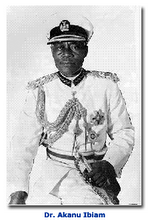
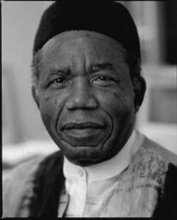

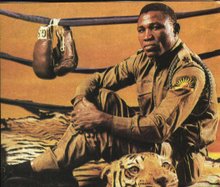
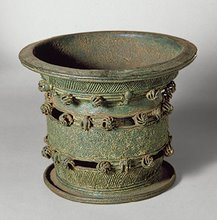
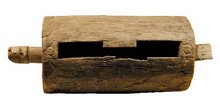
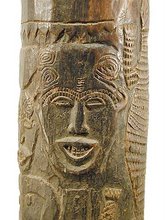
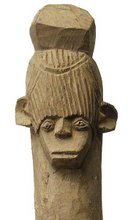
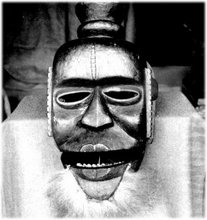

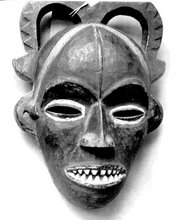
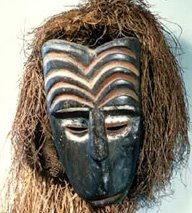
1 comment:
Is this it all? the people of Umuanuma Nguru are in pain, crying everyday for someone to rescue them from the wicked hands of armed robbers who won't let them have peace. I think its about time their "eze" wake up from his slumber and come up with a solution to put a stop on this. All these political statements will never have a meaning when people are out there crying for help!
Check out http//:nottoogoodlooking.blogspot.com and read more
Post a Comment